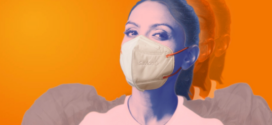Ayurveda is a comprehensive body of medicinal knowledgebase that was developed by our great sages. With a history dating back to five millenniums, the ancient wisdom of Ayurveda offers long-term cure for a wide variety of diseases and ailments. Another great thing about Ayurvedic treatment is that it is completely free from side effects. This is because Ayurveda utilizes natural healing techniques and medicines, which provide holistic healing and are free from side-effects. Ayurveda has much to offer to people and its potential is just starting to get realized. For better understanding, let’s take a look at how Ayurvedic treatment works.
The five elements: Ayurveda focuses on the basic elements that make everything in this universe. These basic elements are air, water, earth, fire and space. Ayurveda is based on the premise that each individual is made up of these five basic elements, just like everything else in the universe. When these elements work in perfect order, an individual experiences good health. However, when these elements are disturbed due to any reason such as stress, anxiety, unhealthy food, sedentary lifestyle, etc., an individual might become susceptible to various diseases. Ayurvedic treatment works to restore these elements in their proper order, so that patients can regain their health in a natural manner.
The three doshas: Each individual has varying proportions of the three doshas – Vata, Pitta and Kapha- which define the type of individual one is, both physically and psychologically. The doshas also define the type of diseases and ailments that an individual will most likely experience in their life. For example, an individual with Kapha dosha will most likely be short and stocky or tall and sturdy. Such a person will have a calm nature and would prefer a relaxed lifestyle. They will be at risk of health issues such as weight gain, cough and cold, lung infections, depression, etc. Similarly, the physical and psychological traits have been determined for people with Pitta and Vata dosha. This information is assessed by Ayurveda doctors to prescribe the most appropriate Ayurvedic treatment and medicines to the patient.
Diagnosis in Ayurveda is based on various factors such as examination of Naadi (Pulse), Mutra (Urine), Mala (stool), Shabda (voice), Jivha(tongue), Sparsha (skin), Drik (Eyes) and Aakriti (body build). Based on this information, the Ayurveda doctor will prescribe the most appropriate Ayurvedic treatment. It is also worthwhile to note that Ayurvedic treatment focuses on eliminating the root cause, so that patients can derive long-term benefits. Owing to its holistic healing techniques and zero side-effects, an increasing number of people are now choosing Ayurvedic treatment.
 Newspatrolling.com News cum Content Syndication Portal Online
Newspatrolling.com News cum Content Syndication Portal Online



